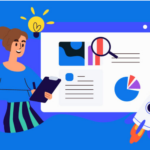Alt text is a brief description of an image that provides context to individuals who cannot see the image. It is an essential component of web accessibility. It provides a text-based equivalent to images, particularly for visually impaired individuals who rely on screen readers to navigate the web. It is also crucial for improving search engine optimization (SEO), making web content more discoverable and accessible for users with disabilities.
Web developers and content creators underestimate the importance of alt text, despite its vital role in web accessibility. It enables visually impaired individuals to understand the content of an image and its relevance to the surrounding content, improving their overall user experience. It also provides web crawlers with information about the image, which can help improve a website’s search engine ranking. As such, it is a critical component of creating an inclusive web environment that is accessible to all users, regardless of their abilities or disabilities.
In this article, we will explore it’s importance in greater detail, discussing its benefits and providing best practices for creating effective descriptions.
What is Alt text?

Alt text is a piece of code you embed in digital content such as PDF or web page. It helps to define the image or graphics available on the website. We all might see it pop up when we hover over an image or when an image is missing. It is crucial for people with disabilities because it conveys the context of an image.
PDFs generally incorporate an image that conveys crucial information to the reader. In case, if the reader does not view the image, the author needs to describe it accurately to people with disabilities. The process of writing it is an art itself and you can describe an image in many ways.
What Is the Alt Text Attribute For?
As we have discussed earlier, the purpose of alt text attributes is twofold. They are a significant tool that helps to optimize web content like image search engine optimization and helps in promoting the level of website content accessibility. However, another primary purpose is for improving the overall user experience and creating digital content accessible to everyone.
Here are some recommendations:
- Offer relevant image content – The visual content needs to be relevant and particular to the topic of the page.
- Image placement is key – It is very significant to optimize the placement and position of the images.
- Do not embed text attributes inside images – Do not embed text elements like headings inside the images.
Search Engine Optimization
Search Engine Optimization helps the company to enhance its website by improving its visibility with the search engines.
Improved visibility refers to better search results which indicate an improved and greater potential for the business customer overall. You can accomplish this by using specific and relevant keywords, anchor texts, multimedia, and attribute.
As we have discussed that primary purpose of the alt text attribute is to enhance the image search ranking like ranking of the Google images. The improved attributes and context surrounding the image will help to deliver greater quality traffic to the website. Google offers information on best and most effective image SEO practices.
Accessibility
Another purpose of alt text is web content accessibility, particularly image accessibility. In reality, it helps to comply with accessibility standards in order to avoid any sort of legal issues or concerns.
Why Is Alt Text Important for Accessibility?
It is essential for accessibility because it allows individuals with visual impairments to understand the content of images on a webpage. Screen readers read them to provide an accurate and meaningful description of the visual content. This makes the web more inclusive and enables people with disabilities to access information that might otherwise be inaccessible to them. Including alt text can also improve search engine optimization and make web content more accessible to individuals with slow internet connections or limited data plans.
Additionally, it facilitates the screen reader user the ability to understand and appreciate the content available on the website without being able to view the image available.
1. Alt text improves digital accessibility
The major benefit of incorporating accurate alt text means it creates accessible digital content. However, the availability in the HTML code alone doesn’t make the image accessible. But it is certainly more appropriate than having no alt text at all.
2. Alt text helps improve SEO
Images with alt text seem to rank better in organic search. Better or more effective search rankings will help to attract significant traffic from search engines such as Bing or Google.
3. Alt text improves the overall user experience
Adding alt text to images helps improve user experience for all visitors to a site.
What Should Alt Text Attributes Contain?
Making an accurate alternate text attribute is not a complicated task. However, it does require some practice. You need to make sure that all informative images have an alt text attribute. This applies to hyperlinks, logos, buttons, and much more (basically anything that needs context).
There is a need to remain focused on keeping the attribute short and succinct while employing the relevant or particular keywords. It must typically be 80 characters or less. Avoid long descriptions as it makes it complex for people with disabilities to understand the content appropriately.
Long-tail Keywords
Alt texts must include long tail keywords whenever possible. Long-tail keywords are longer and employ particular keyword phrases that users probably type in search queries.
These are simpler to rank and targeted toward a particular audience. The downside is probably less traffic; however, the point is to pull in quality site traffic.
Specificity
The user needs to make certain that the alt text needs to be specific. The user would be able to incorporate loads of detail about the image however still miss the point. If anything, it needs to be specific to make content accessible to all.
When the user narrows down on the specifics of the images, search engines are likely to rank them higher in the query index. If your image is of a volleyball player scoring a touchdown; it needs more than a general “a volleyball player scoring a touchdown.”
Context
It is very important to incorporate a clear context to make digital content accessible to all. Context is everything when it comes to alt text attributes. Therefore, context is the fundamental aspect of making the content content accessible, allowing companies to achieve digital accessibility.
How Can We Add Alt Text Attributes to Images and Links?
The procedure completely depends on the platform. Some of the well-known and popular content management systems like WordPress facilitate their use to embed alt text into the CSS or HTML as they create a page or even a blog. Some of them facilitate the user to easily click on the image available in the body of the blog to optimize the links or images.
Conclusion
Alt text is a crucial element in web accessibility and has become an integral part of designing and creating digital content. It provides a textual description of images for screen readers and enables people with visual impairments to understand the content.
It also improves search engine optimization and can benefit website owners by increasing their website’s visibility in search results. It is important for content creators to include them in their images and ensure that it accurately describes the image’s content and context to provide an inclusive and accessible web experience for all users.








